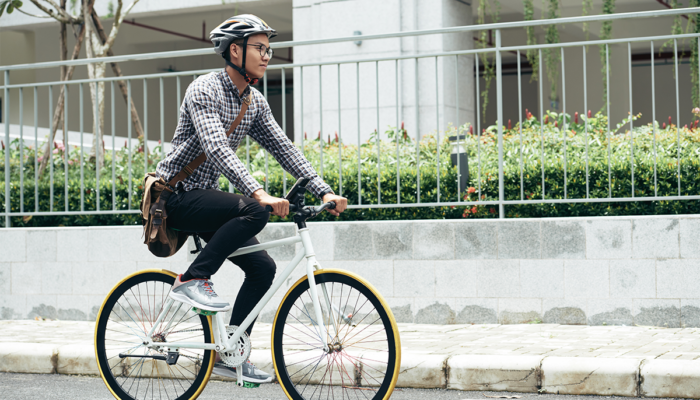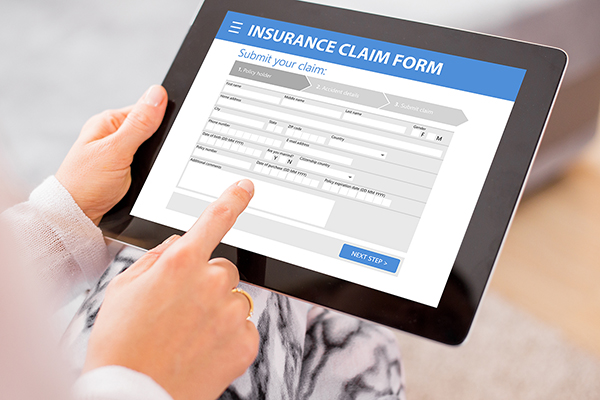Over the past decade, bicycling has become increasingly popular for recreation, exercise, and to reduce one’s carbon footprint on the environment. As a result, the number of bicycling-related injuries and deaths has also risen, and Arizona is ranked among the top five most dangerous states for cyclists.
It is legal for bicycles to ride in traffic lanes in Arizona; however, many cyclists are not aware that they are equally responsible for sharing the road with motorists and must adhere to the following laws:
A.R.S 28-644. Obedience to and required traffic control devices. Cyclists on the road must adhere to stop signs and traffic signals same as motorist.
A.R.S. 28-704. Minimum speed limits; requirement to turn off roadway. Cyclists on a two-lane road that have five or more vehicles behind them are required to pull off when safe to do so to allow the vehicles to pass.
ARS 28-756. Method of giving hand and arm signals. Cyclists must indicate that they plan to change lanes or turn by using hand and arm signals. The left hand and arm should be extended horizontally for left turns and the right hand and arm can be extended horizontally for right turns. As with motorists, cyclists should first check behind themselves, and yield to existing traffic before making turns or changing lanes.
A.R.S. 28-792. Right-of-way at crosswalk. As with motorists, cyclists must give pedestrians the right-of-way at crosswalks. Additionally, a cyclist may not go around another vehicle that is stopped at a crosswalk being used by a pedestrian.
A.R.S. 28-813. Riding on bicycles. A rider must be seated on a permanent or regular seat that is attached to the bicycle frame. Additionally, each rider must have his or her own seat. For example, two riders are not permitted to be on a bicycle equipped with only one seat.
A.R.S. 28-814. Clinging to vehicle. A rider on a bicycle is not permitted to be towed by or attached to a vehicle on the road.
A.R.S. 28-815. Riding on roadway and bicycle path; bicycle path usage. Cyclists must travel in the right-hand lane or as close as possible to the right-hand curb or edge of the roadway, except when passing another vehicle traveling in the same direction or when making a left turn at an intersection or onto a private road or driveway. Additionally, only two cyclists on a roadway may travel side-by-side unless on paths or roadways exclusively designated for bicycles.
A.R.S. 28-816. Carrying article on bicycle. A cyclist is not permitted to carry a package, bundle or article while operating a bicycle if item(s) prevents the rider from keeping at least one hand on the handlebars.
A.R.S. 28-817. Bicycle equipment. Sirens and whistles are not permitted to be used on a bicycle. Bicycles used at night must be equipped with a head lamp that emits a white light visible from a distance of at least 500 feet ahead and a red reflector on the rear that is visible by a motor vehicle’s head lamps from 50 to 300 feet. A red taillight visible from 500 feet is also acceptable for the rear of a bike. Bicycles must also be equipped with a brake the enables the rider to make the brake wheels skid on dry, level, clean pavement.
A.R.S. 28-904. Driving on sidewalk. Bicycles may not be ridden on sidewalks meant for pedestrians.
In addition to these state-wide laws, some counties and cities have helmet laws. Regardless of whether they are mandated, it is highly advised to always where a helmet when operating a bicycle.
Riders should also follow the Bicyclists’ Code of Conduct and pledge to be courteous to other cyclist, pedestrians, and motorists. The following are safety reminders and proper cycling etiquette:
- Follow lane markings and comply with traffic signs and traffic signals, including stopping at stop signs and red lights.
- Ride as near to the right of the curb as practicable.
- Use appropriate hand signals for turning and stopping.
- Honor others’ right of way and keep a 3-to-4-foot distance when passing pedestrians or another cyclist. Pass on the left when possible, giving a verbal signal of your intentions.
- Ride with traffic, single file or maximum of two riders side-by-side when practicable.
- Be predictable and ride in a straight line.
- Avoid blocking the road.
- Wear contrasting or reflecting clothing and use head lamps at night.
- Leave a buffer between parked cars and watch for doors opening and vehicles merging into traffic.
- Keep both hands ready to brake and allow extra distance for stopping in rain, since brakes can be less efficient when wet.
- Avoid road hazards, such as railroad tracks, sewer grates, manhole covers, steel plates used to cover construction, oily pavement, gravel, potholes, etc.
- Park bicycle in a location that does not obstruct or interfere with pedestrians or vehicles
- Respect pedestrians’ rights.
- Do not weave between parked cars or ride between parked cars and the curb.
- Use designated crosswalks, dismounting and walking across the road. Doing so gives the cyclist the same rights of the road as a pedestrian.
If you are a cyclist that has been involved in an accident with a motor vehicle, call us at (602) 368-1869 for a free evaluation of your case. Hate talking on the phone? Text us at 480.688.7544 to set up a virtual appointment.


